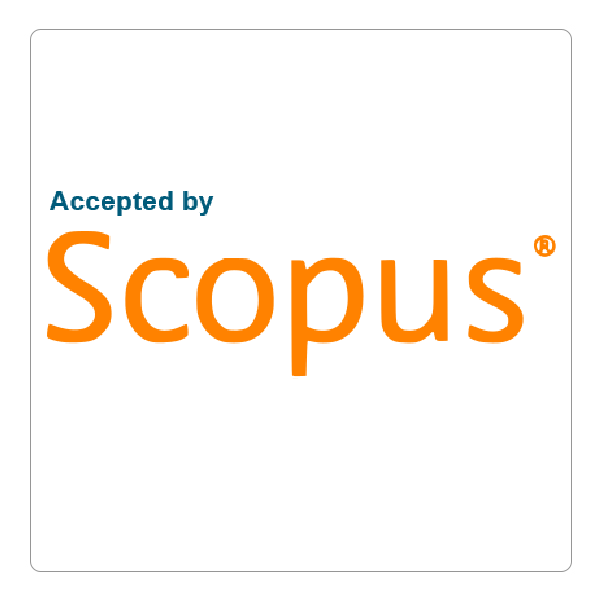How to Cite This Article
Hassan, Zuber I.
(2021)
"Prevalence and Molecular Identification of Giardiasis Isolates from Stray Dogs in Erbil Province, Kurdistan Region, Iraq,"
Polytechnic Journal: Vol. 11:
Iss.
1, Article 2.
DOI: https://doi.org/10.25156/ptj.v11n1y2021.pp7-12
Document Type
Original Article
Abstract
Giardia lambliais the intestinal, flagellated protozoan parasite. It should make a species complex and comprises eight assemblages (A-H). In the current study, out of 153 examined samples, 16 (10.46%) and 36 (23.53%) specimens were positive by concentration and polymerase chain reaction (PCR) technique for giardiasis, respectively. The highest rate of infection was found in a rural area (14.38%) than in urban areas (9.15%). As well as, the infection rate in males (25/153) was higher compared to that of female dogs (11/153). Regarding fecal consistency, the highest rate (18.3%) of giardiasis was observed in diarrheic dogs, while the lowest rate of giardiasis (5.23%) was observed among non-diarrheic dogs. The PCR products were sequenced for 20 samples and further examined by sequence analysis, 16 isolates under the accession number (MN629930), independent of the host, exhibited G. lamblia GenBank ID: M36728, while in four samples under the accession number (MN629931), nucleotide substitutions generate polymorphism at position 542 and 561 (C → T) and (A → G) at position 684. The similarity between MN629931 and AY072723 genotype A2 was 99.9% which was one nucleotide substitution at position 542 (C → T). The sequencing of the PCR products recognized two assemblages in dogs suggested the possible role of dogs as the reservoir for human giardiasis in Erbil Province which is the first records in the Kurdistan Region, Iraq.
Publication Date
6-30-2021
References
Adell-Aledón, M., P. C. Köster, A. Lucio, P. Puente, M. H. Mingo, P. Sánchez-Thevenet, M. A. Dea-Ayuela and D. Carmena. 2018. Occurrence and molecular epidemiology of Giardia duodenalis infection in dog populations in eastern Spain. BMC. Vet. Res. 14: 26.
Al-Difaie, R. S. 2016. Molecular study to detect genotyping of Giardia lamblia from human and cattle feces in Al-Qadisiya Governorate, Iraq. Ibn Al-Haitham J. Pure Appl. Sci. 29(3): 1-13.
Al-Fahadawi, S. M., S. F. Al-Ani, G. Yusra and Y. G. Yaseen. 2017. Detection of genotypes for Giardia lamblia in Iraqi patient’s feces by using PCR-RFLP techniques based on GDH gene characterization. J. Univ. Anbar Pure Sci. 11(2): 18-24.
Bahrami, F., G. H. Zamini, A. Haghighi and M. B. Khademerfan. 2017. Detection and molecular identification of human Giardia isolate in the West of Iran. Biomed. Res. Indian. 28(13): 5687-5692.
Bianciardi, P., R. Papini, G. Giuliani and G. Cardini. 2004. Prevalence of Giardia antigen in stool samples from dogs and cats. Rev. Méd. Vét. 155(8-9): 417-421.
Bonhomme, J., L. Goff, V. Lemée, G. Gargala, J. J. Ballet and L. Favennec. 2011. Limitations of tpi and bg genes sub-genotyping for characterization of human Giardia duodenalis isolates. Parasitol. Int. 60(3): 327-330.
Cacciò, S. M., M. Giacomo and E. Pozio. 2002. Sequence analysis of the β-giardin gene and development of a polymerase chain reaction-restriction fragment length polymorphism assay to genotype Giardia duodenalis cysts from human fecal samples. Int. J. Parasitol. 32(8): 1023-1030.
Caccio, S. M., R. C. A. Thmpson, J. Mc.Laughlin and H. V. Smith. 2005. Unraveling cryptosporidium and Giardia epidemiology. Trends Parasitol. 21: 430-437.
Faria, C. P., G. M. Zanini, G. S. Dias, S. Silva and C. S. Maria. 2016. Molecular characterization of Giardia lamblia: First report of assemblage b in human isolates from Rio de Janeiro (Brazil).PLoS One. 11(8): e0160762.
Fava, N. M. N., R. S. Soares, L. A. M. Scalia, M. J. R. Cunha, E. S. M. Faria and M. C. Cury. 2016. Molecular typing of canine Giardia duodenalis isolates from Minas Gerais, Brazil. Exp. Parasitol. 161: 1-5.
Feng, Y. and L. Xiao. 2011. Zoonotic potential and molecular epidemiology of Giardia species and giardiasis. Clin. Microb. Rev. 24: 110-140.
Flávio, M., P. Silva, M. M. Monobe, R. S. Lopes and J. P. Jr. Araujo. 2011. Molecular characterization of Giardia duodenalis in dogs from Brazil. Parasitol. Res. 109: 1-11.
Gil, H., L. Cano, A. Lucio, B. Bailo, M. H. Mingo, G. A. Cardona, J. A. Fernandez-Basterra, J. Aramburu-Aguirre, N. LopezMolina and D. Carmena. 2017. Detection and molecular diversity of Giardia duodenalis and Cryptosporidium spp. in sheltered dogs and cats in Northern Spain. Infect. Genet. Evol. 50: 62-69.
Gultekin, M., K. Ural, N. Aysul, A. Ayan, C. Balikcia and G. Akyildiz. 2017. Prevalence and molecular characterization of Giardia duodenalis in dogs in Aydin, Turkey. Int. J. Environ. Health Res. 27(3): 161-168.
Hall, T. A. 1999. BioEdit: Auser-friendly biological sequence alignment editor and analysis program for Windows 95/98/NT. Nucleic Acids Symp. Ser. 41: 95-98.
Holberton, D. V. and J. Marshall. 1995. Analysis of consensus sequence patterns in Giardia cytoskeleton gene promoters. Nucleic Acids Res. 23(15): 2945-2953.
Holberton, D., D. A. Baker and J. Marshall. 1988. Segmented a-helical coiled-coil structure of the protein giardin from the Giardia cytoskeleton. J. Mol. Biol. 204: 789-795.
Hossain, M. A., S. A. Mina, L. W. Marzan, M. A. K. Emon, R. Das and A. Z. Siddik. 2014. First genotype characterization of Giardia intestinalis assemblage E from Goat Kids in Bangladesh. Vet. Sci. Technol. 5: 201.
Inpankaew, T., F. Schär, P. Odermatt, A. Dalsgaard, W. Chimnoi, V. Khieu, S. Muth and R. J. Traub. 2014. Low risk for transmission of zoonotic Giardia duodenalis from dogs to humans in rural Cambodia. Parasit. Vectors. 7: 412.
Marangi, M., F. Berrilli, D. Otranto and A. Giangaspero. 2010. Genotyping of Giardia duodenalis among children and dogs in a closed socially deprived community from Italy. Zoonoses Public Health. 57: e54-e58.
Monis, P. T., R. H. Andrews, G. Mayrhofer and P. L. Ey. 1999. Molecular systematics of the parasitic protozoa Giardia intestinalis. Mol. Biol. Evol. 16: 1135-1144.
Morrison, H. G., A. G. McArthur, F. D. Gillin, S. B. Aley, R. D. Adam, G. J. Olsen, A. A. Best, W. Z. Cande, F. Chen, M. J. Cipriano, B. J. Davids, S. C. Dawson, H. G. Elmendorf, A. B. Hehl, M. E. Holder, S. M. Huse, U. U. Kim, E. Lasek-Nesselquist, G. Manning, A. Nigam, J. E. J. Nixon, D. Palm, N. E. Passamaneck, A. Prabhu, C. I. Reich, D. S. Reiner, J. Samuelson, S. G. Svard and M. L. Sogin. 2007. Genomic minimalism in the early diverging intestinal parasite Giardia lamblia. Science. 317: 1920-1926. Available from: http://www.sciencemag.org.
Naser, A. and I. Abdul Wadood. 2017. Detection of Giardia infection in dogs of Basrah city. Bas. J. Vet. Res. 16(2): 159-171.
Nunes, B. C., D. A. Calegar, M. G. Pavan, L. H. Jaeger, K. J. L. Monteiro, E. R. C. Dos Reis, M. M. Lima, M. N. Bóia and F. A. CarvalhoCosta. 2018. Genetic diversity of Giardia duodenalis circulating in three Brazilian biomes. Infect. Genet. Evol. 59: 107-112.
Palmer, C. S., R. J. Traub, I. D. Robertson, G. Devlin, R. Rees and R. C. Thompson. 2008. Determining the zoonotic significance of Giardia and Cryptosporidium in Australian dogs and cats. Vet. Parasitol. 154: 142-147.
Piekarska, J., J. Bajzert, M. Gorczykowski, M. Kantyka and M. Podkowik. 2016. Molecular identification of Giardia duodenalis isolates from domestic dogs and cats in Wroclaw, Poland. Ann. Agric. Environ. Med. 23(3): 410-415.
Pipia, A. P., A. Varcasia, C. Tamponi, G. Sanna, M. Soda, B. Paoletti, D. Traversa and A. Scala. 2014. Canine giardiosis in Sardinia Island, Italy: Prevalence, molecular characterization, and risk factors. J. Infect. Dev. Ctries. 8(5): 655-660.
Prystajecky, N., C. K. M. Tsui, W. W. L. Hsiao, M. I. U. Diaz, J. Ho, P. Tang and J. Isaac-Rentona. 2015. Molecular and whole genome characterization of Giardia waterborne isolates: Mixes are common in surface water. Appl. Environ. Microbiol. 81(14): 4827-4834.
Puebla, L. E. J., F. A. Núñez, I. M. Silva, L. R. Rivero, M. M. González, Y. Sutil, L. A. Valdés, I. A. Millán and N. Müller. 2015. Molecular characterization and risk factors of Giardia duodenalis among school children from La Habana, Cuba. J. Parasitol. Res. 2015: 378643.
Rayani, M., N. Z. Unyah and G. Hatam. 2014. Molecular identification of Giardia duodenalis isolates from Fars Province, Iran. Iran. J. Parasitol. 9(1): 70-78.
Roointan, E. S., A. Rafiei, A. R. Samarbaf-Zadeh, A. A. Shayesteh, A. Shamsizadeh and M. P. Borujeni. 2013. Molecular identification of Giardia lamblia isolates from adult human cases in southwest of Iran. Afr. J. Biotechnol. 12(9): 901-906.
Ryan, U. and S. M. Cacciò. 2013. Zoonotic potential of Giardia. Int. J. Parasitol. 43: 943-956.
Solarczyk, P., A. Werner and A. C. Majewska. 2010. Genotype analysis of Giardia duodenalis isolates obtained from humans in West-Central Poland. Wiad. Parazytol. 56(2): 171-177.
Tangtrongsup, S., A. V. Scorza, J. S. Reif, L. R. Ballweber, M. R. Lappin and M. D. Salman. 2017. Prevalence and multi-locus genotyping analysis of Cryptosporidium and Giardia isolates from dogs in Chiang Mai, Thailand. Vet. Sci. 4(26): 1-10.
Teodorovic, S., J. M. Braverman and H. G. Elmendorf. 2007. Unusually low levels of genetic variation among Giardia lamblia isolates. Eukaryot. Cell. 6(8): 1421-1430.
Thompson, J. D., T. J. Gibson, F. Plewniak, F. Jeanmougin and D. G. Higgins. 1997. The Clustal-X windows interface: Flexible strategies for multiple sequence alignment aided by quality analysis tools. Nucleic Acids Res. 25: 4876-4882.
Traub, R. J., P. T. Monis, I. Robertson, P. Irwin, N. Mencke and R. C. Thompson. 2004. Epidemiological and molecular evidence supports the zoonotic transmission of Giardia among humans and dogs living in the same community. Parasitology. 128(3): 253-262.
Upjohn, M., C. Cobb, J. Monger, T. Geurden, E. Claerebout and M. Fox. 2010. Prevalence, molecular typing and risk factor analysis for Giardia duodenalis infections in dogs in a central London rescue shelter. Vet. Parasitol. 172: 341-346.
Wielinga, C., U. Ryan, R. D. A. Thompson and P. Monis. 2011. Multilocus analysis of Giardia duodenalis intra-Assemblage B substitution patterns in cloned culture isolates suggests sub Assemblage B analyses will require multi-locus genotyping with conserved and variable genes. Int. J. Parasitol. 41: 495-503.
Zhang, Y., Z. Zhong, L. Deng, M. Wang, W. Li, C. Gong, H. Fu, S. Cao, X. Shi, K. Wu and G. Peng. 2017. Detection and multilocus genotyping of Giardia duodenalis in dogs in Sichuan Province, China. Parasite. 24: 31.











Follow us: